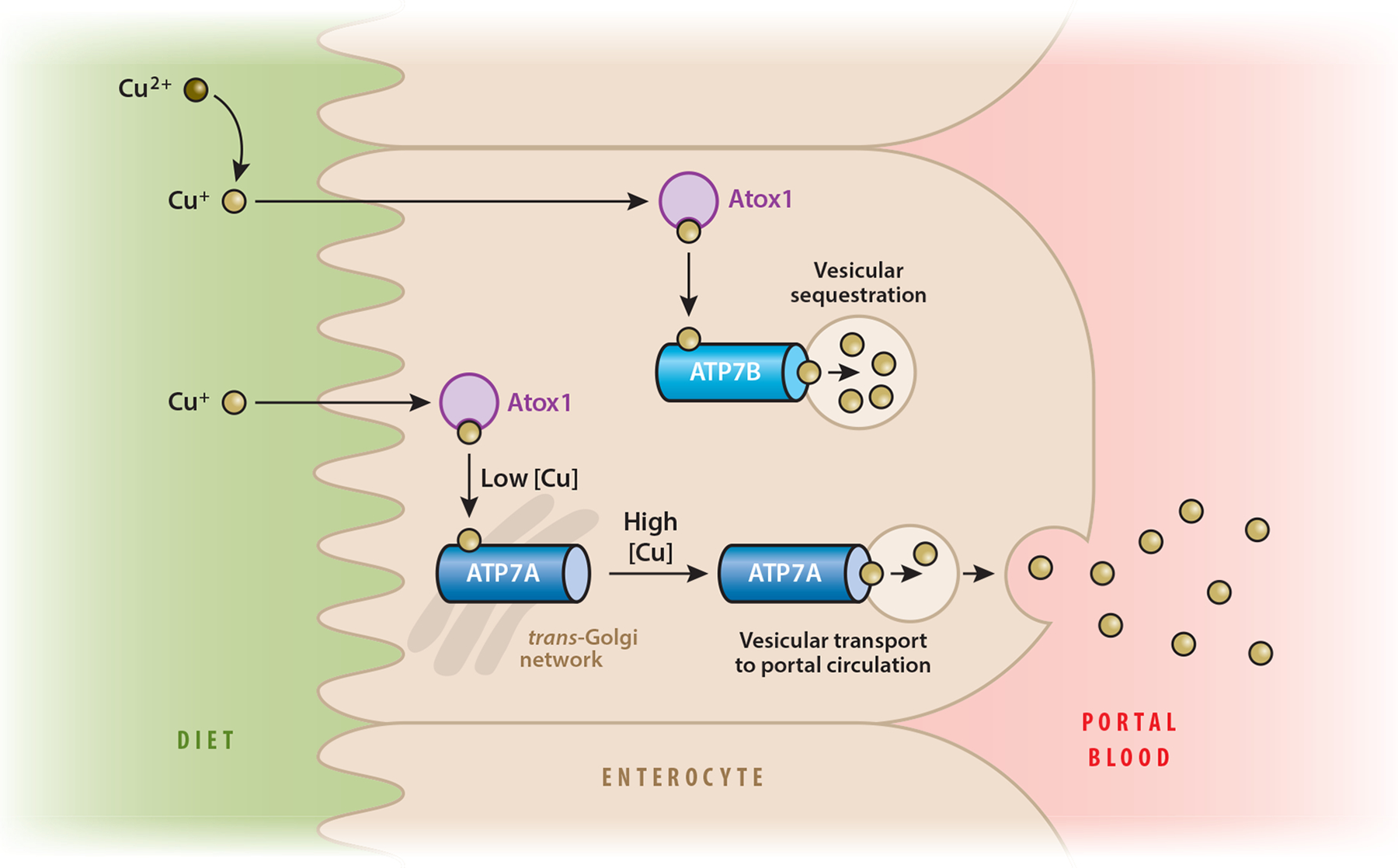Figure 1.

Model of dietary copper (Cu) acquisition and storage in human absorptive epithelium. Dietary Cu is in the Cu2+ oxidation state. Enzymes at the brush border reduce Cu2+ to Cu+ prior to importation into the cell (80). Reduced Cu is bound by Cu chaperones. Atox1 is a Cu chaperone that delivers Cu to ATP7A and ATP7B (30). Under low-Cu conditions, ATP7A resides in the trans-Golgi network (78). When intracellular Cu loads are high, ATP7A traffics to the basolateral membrane and transports Cu+ into portal circulation. ATP7B sequesters Cu in vesicles, presumably to buffer cytosolic Cu levels or deliver Cu to yet-to-be-identified Cu-dependent enzymes located in the vesicles.
